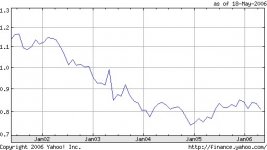I do not own a Leica, but I do own some nice things. Why is it that an appreciation of quality automatically equates to "vainity"? Art can be created in many different ways - why is something that is so obviously of high quality not appreciated as such? It's a shame that we allow ourselves to be blinded to this fact simply because it also can perform a function. I think that is the crux of the issue - whether or not we see the ________ in terms of 1) what it is vs. 2) what it does. If I looked at everything in terms of it's function, then my photographic prints have little to no value. They are simply pieces of used paper. I have to appreciate them for what they are, not what they can do. When I hold something that is precision made, I can appreciate the inherent quality of that item. I believe that is what Leica afficionados are doing. They are appreciating a thing of high quality, not in comparison with anything else, but simply appreciating it for what it is.
Peter



